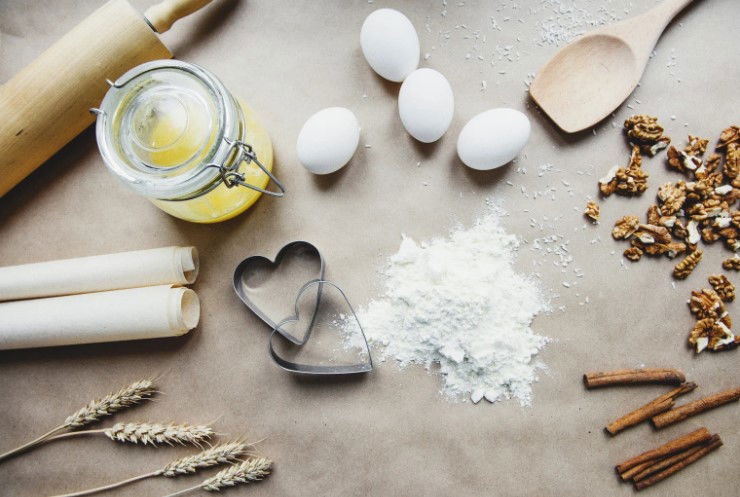Baking powder is a mixture of sodium bicarbonate (baking soda) and a powdered acid, usually cream of tartar. It often contains a moisture-absorbing filler like cornstarch that prevents clumping.
Double-acting baking powder activates twice, releasing carbon dioxide to help baked items rise. It first reacts when hit with moisture, then again once it’s heated.
As a professional baker of over ten years, I find baking powder to be indispensable. I’ve used it to add volume to biscuits, quick breads, cakes, cupcakes, cookies, and brownies. It’s a breeze to use and always makes for light, fluffy pastries.
Baking powder can be a quick and easy substitute, but it depends on what you have on hand. Here’s a list of 7 substitutes, 4 of them with baking soda and 3 of them without.
In This Article
7 Substitutes for Baking Powder
1. Baking Soda + Cream of Tartar
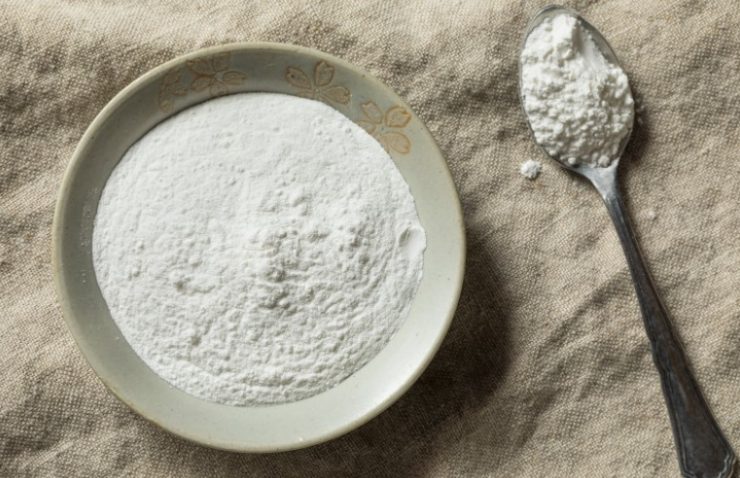
Baking soda and cream of tartar are the two main components of baking powder. This makes them the most direct substitute for baking.
This substitution can work well in any baking recipe that calls for baking powder.
If you’re going to use this substitute in your recipe and bake it right away, use it as follows. Mix 1 teaspoon baking soda with 2 teaspoons of cream of tartar. Then use the mixture at a 1:1 ratio for baking powder.

Pro Tip: Want to make your own jar of baking powder to keep on hand at home? Mix 2 parts of cream of tartar, 1 part baking soda, and 1 part cornstarch. Store in a well-sealed jar away from moisture and heat.
2. Baking Soda + Vinegar
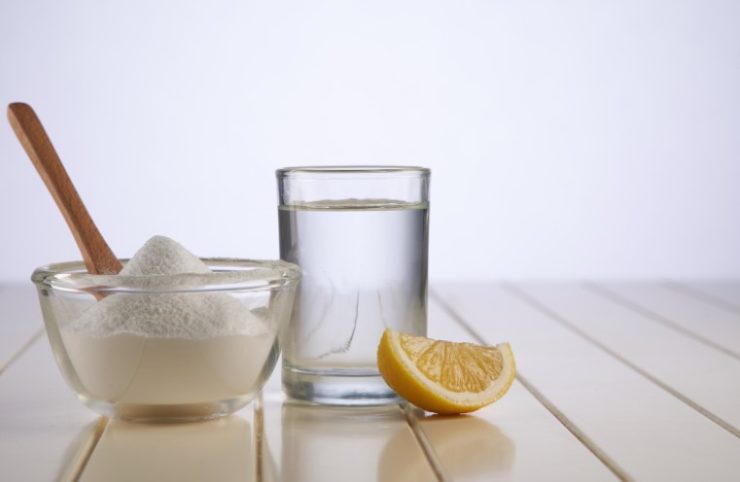
This substitute makes use of the acidity of vinegar to activate baking soda.
It’s good for cookies, cakes, and other recipes that don’t call for high quantities of baking powder. The strong taste of vinegar can be too overpowering in large amounts.
You can use any type of vinegar, but white vinegar is the most neutral-tasting kind.
To substitute 1 teaspoon of baking powder, use ¼ teaspoon of baking soda plus ½ teaspoon vinegar. Mix both ingredients with the other wet ingredients in your recipe.
Once you mix the wet ingredients with your dry ingredients, place the batter or dough in the oven right away. This ensures you’ll get the most volume from the chemical reaction.
3. Baking Soda + Lemon Juice
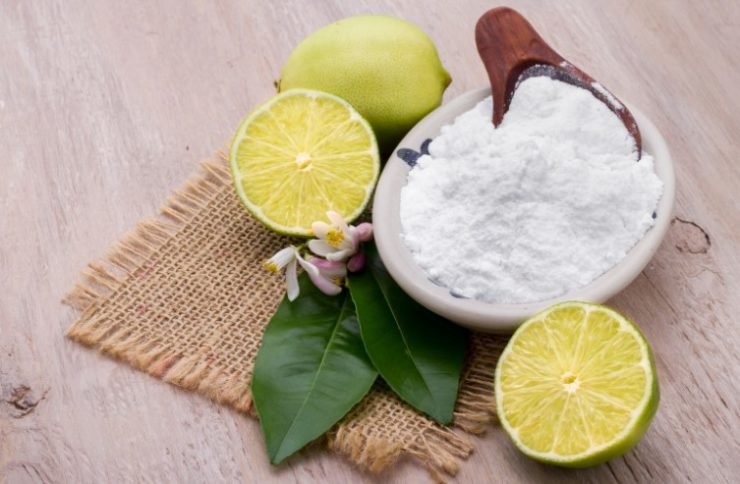
This is another substitute that uses an acid to activate baking soda.
Only use this combo for recipes where you wouldn’t mind a touch of lemon flavor in the final product. And only use it for recipes that call for small amounts of baking powder, around 2 tablespoons or less.
You might want to avoid this substitute for recipes like baking powder biscuits. The flavor of some recipes doesn’t mesh well with large amounts of lemon juice.
This combination works great in pancakes and waffles, quick breads, muffins, and cakes. The lemon juice is also a perfect enhancement to any recipe that contains fruit.
To substitute 1 teaspoon baking powder, use ¼ teaspoon baking soda and ½ teaspoon lemon. As with the vinegar substitution above, add the baking soda with your dry ingredients. Then add the lemon with your wet ingredients.
4. Baking Soda + Fermented Dairy
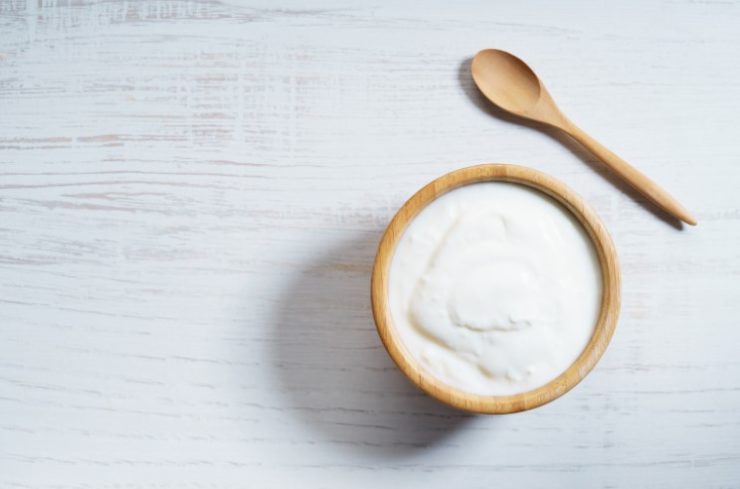
Fermented dairy products like buttermilk and yogurt have an increased acidity. Because of this, they can serve as the acidic counterpoint to baking soda.
Not to mention that fermented dairy adds a complex depth of flavor that’s hard to beat!
This mixture has a high moisture content, so it functions best in batters. Try it in quick breads, pancakes, waffles, muffins, and denser cakes.
To replace 1 teaspoon baking powder, use ¼ tsp. baking soda and ½ cup buttermilk or plain yogurt.

Pro Tip: To account for the addition of the dairy, be sure to subtract an equal amount of the other liquids in your recipe.
5. Self-Rising Flour
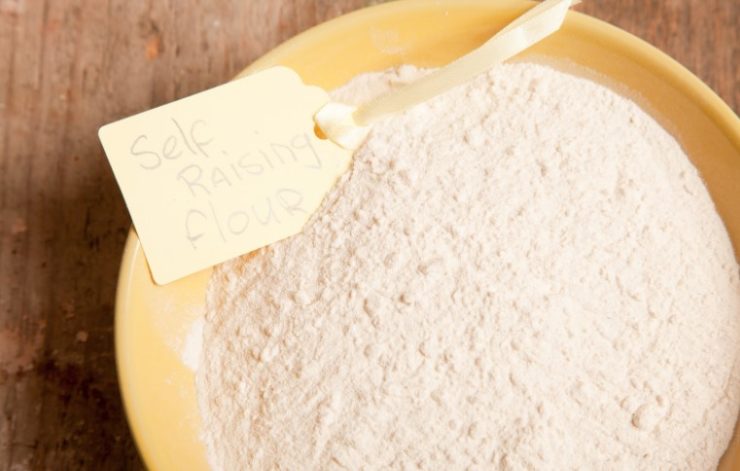
Self-rising flour is a super easy substitute for baking powder. Since it already contains baking powder and salt in the mix, it’s ready to use.
It works in any recipe that calls for both all-purpose flour and baking powder. Cakes, muffins, pancakes, and biscuits can all bake up perfectly with this flour.
Use this substitute by replacing 100% of the all-purpose flour in your recipe with self-rising flour. You can leave out any other baking powder, baking soda, and salt that’s called for in the recipe.
6. Club Soda
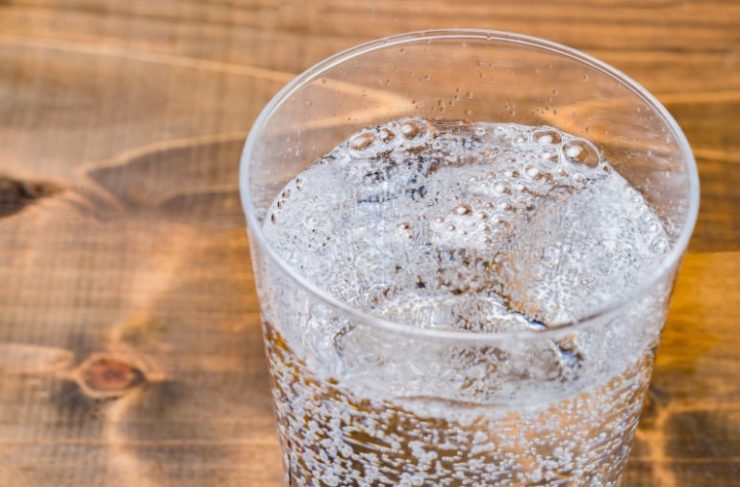
This carbonated beverage uses sodium bicarbonate (baking soda) for its bubbles and taste. Because of this, it works well as a substitute for baking powder.
Use club soda to replace baking powder in batter-based recipes. These include pancakes, waffles, muffins, and quick breads.
Delicate, airy cakes won’t be able to get a proper rise with this substitute, so I wouldn’t recommend it for those.
To use this substitute, replace the liquids in your recipe at a 1:1 ratio with club soda.
7. Whipped Egg Whites
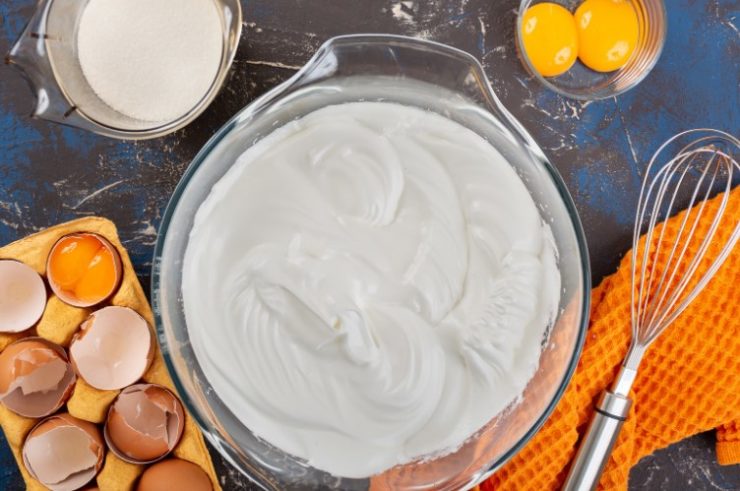
Whipped egg whites were one of the first leaveners that humans used after yeast for baking. So they can serve as an effective baking powder substitute.
Beating egg whites whips up tons of tiny bubbles that cause rising in your baked items. And when the proteins in the egg whites set from the heat, they help to hold structure.
Egg whites will work well in any recipe that calls for whole eggs or egg whites. These include pancakes, cakes, quick breads, and meringues.
You may want to avoid this substitution in cookies. This is because the egg whites add a substantial amount of liquid.
To substitute one teaspoon of baking powder, use two egg whites in its place.
Whip your egg whites at low speed until frothy. Then turn your mixer up to high speed and continue whipping them until soft peaks form.
Use a rubber spatula to gently fold the egg whites into your other ingredients before baking. Be careful not to overmix to preserve the air bubbles.

Pro Tip: Soft peaks are a stage that egg whites reach after whipping. When you lift up your whisk from the whites and the tips flop over, but still hold their shape, you have soft peaks.
Final Tips for Baking Powder Substitutes
Buttermilk, yogurt, and club soda can add a lot of moisture when they’re used to replace baking powder. Remember to subtract the same amount of liquid from the recipe that you’re adding in.
For example, if you add ¼ teaspoon baking soda and ½ cup yogurt, go ahead and subtract ½ cup of the other liquids from your recipe.
When using club soda, remember to replace all the liquids in your recipe with the carbonated beverage. While your baked goods won’t rise quite as high, it’s still a useful last-minute substitution.
Finally, take care to avoid overmixing when adding airy ingredients like whipped egg whites and club soda. Keep those bubbles intact and your baked goods will rise to the occasion like they’re meant to!
Frequently Asked Questions
What can I use if I’m out of baking powder?
To replace 1 teaspoon baking powder, mix in ¼ teaspoon baking soda and ½ teaspoon white vinegar with the liquids in your recipe. Bake once mixed.
How can I make my own baking powder?
Mix one part baking soda, one part cornstarch, and two parts cream of tartar. Seal in a dry, tightly-sealed container away from heat and moisture.
How can I substitute baking powder without baking soda?
Use two egg whites to replace 1 teaspoon of baking powder. Whip egg whites to soft peaks, then fold gently into your recipe just before baking.
